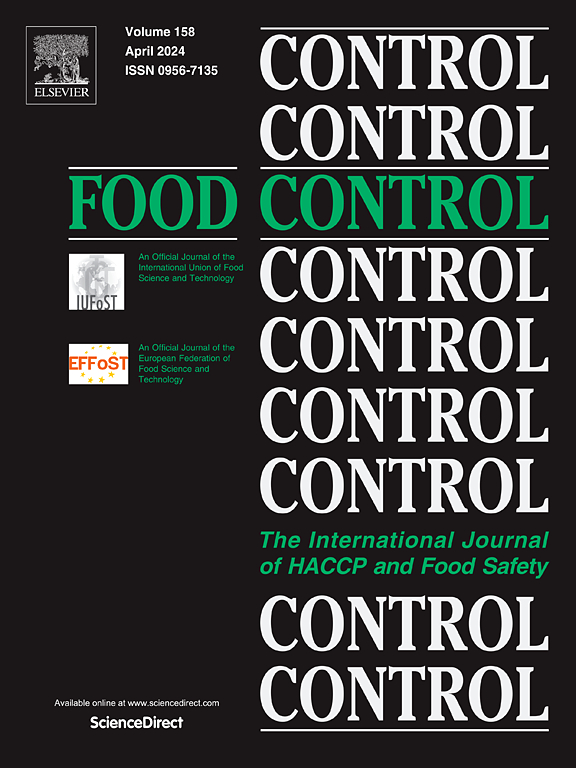Identification of the geographical origin of wild rice field eel (Monopterus albus) in China by stable isotopes
IF 6.3
1区 农林科学
Q1 FOOD SCIENCE & TECHNOLOGY
引用次数: 0
Abstract
The mislabeling of wild rice field eel (Monopterus albus) origin disrupts market order and hinders ecological research and conservation. To address this, 100 wild eel samples were collected from five regions across three major river basins in China. For the first time, stable isotope ratio analysis (δ13C, δ15N, δ2H, and δ18O) was used to assess geographic variation. Results showed significant regional differences: samples from Shanghai had lower δ13C and higher δ15N ratios, while those from Nanning exhibited significantly higher δ2H and δ18O ratios (p < 0.05). These differences reflect environmental and trophic distinctions among habitats. Partial least squares discriminant analysis (PLS-DA), validated through leave-one-out cross-validation, achieved an overall classification accuracy of 92 %, with identification rates exceeding 90 % for each region. This study demonstrates that stable isotope analysis is a reliable tool for tracing the geographic origin of wild eels in China, improving product traceability, supporting conservation, and enhancing consumer trust.
用稳定同位素鉴定中国野生黄鳝的地理来源
野生黄鳝产地标签错误,扰乱了市场秩序,阻碍了生态研究和保护。为了解决这一问题,研究人员从中国三大流域的五个地区收集了100份野生鳗鱼样本。首次采用稳定同位素比值分析(δ13C、δ15N、δ2H和δ18O)来评价地理差异。结果显示,区域差异显著:上海样品δ13C和δ15N比值较低,而南宁样品δ2H和δ18O比值显著较高(p <;0.05)。这些差异反映了生境之间的环境和营养差异。偏最小二乘判别分析(PLS-DA)经留一交叉验证,总体分类准确率达到92%,每个区域的识别率超过90%。该研究表明,稳定同位素分析是追踪中国野生鳗鱼地理来源、提高产品可追溯性、支持保护和增强消费者信任的可靠工具。
本文章由计算机程序翻译,如有差异,请以英文原文为准。
求助全文
约1分钟内获得全文
求助全文
来源期刊

Food Control
工程技术-食品科技
CiteScore
12.20
自引率
6.70%
发文量
758
审稿时长
33 days
期刊介绍:
Food Control is an international journal that provides essential information for those involved in food safety and process control.
Food Control covers the below areas that relate to food process control or to food safety of human foods:
• Microbial food safety and antimicrobial systems
• Mycotoxins
• Hazard analysis, HACCP and food safety objectives
• Risk assessment, including microbial and chemical hazards
• Quality assurance
• Good manufacturing practices
• Food process systems design and control
• Food Packaging technology and materials in contact with foods
• Rapid methods of analysis and detection, including sensor technology
• Codes of practice, legislation and international harmonization
• Consumer issues
• Education, training and research needs.
The scope of Food Control is comprehensive and includes original research papers, authoritative reviews, short communications, comment articles that report on new developments in food control, and position papers.
 求助内容:
求助内容: 应助结果提醒方式:
应助结果提醒方式:


